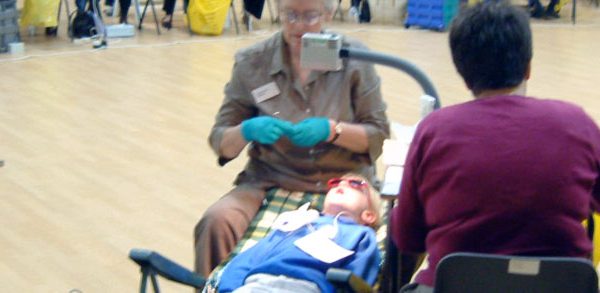Survey resources
This page links to a range of resources grouped under the following headings.
- Sampling; caries criteria; and training and calibration
BASCD have produced guidance on sampling, caries criteria and on statistical aspects of training and calibration to support the UK dental epidemiology programmes.
- BASCD sampling guidance
Pine, C.M., Pitts, N.B., Nugent, Z.J. (1997b): British Association for the Study of Community Dentistry (BASCD) guidance on sampling for surveys of child dental health. A BASCD coordinated dental epidemiology programme quality standard. Community Dental Health 14 (Supplement 1), 10-17.
- BASCD caries criteria
Pitts, N.B., Evans, D.J., Pine, C.M. (1997): British Association for the Study of Community Dentistry (BASCD) diagnostic criteria for caries prevalence surveys – 1996/97. Community Dental Health 14 (Supplement 1), 6-9.
- BASCD training and calibration guidance
Pine, C.M., Pitts, N.B., Nugent, Z.J. (1997a): British Association for the Study of Community Dentistry (BASCD) guidance on the statistical aspects of training and calibration of examiners for surveys of child dental health. A BASCD co-ordinated dental epidemiology programme quality standard. Community Dental Health 14 (Supplement 1), 18-29.
- Other commonly used clinical indicators
A number of other clinical indicators which have been used in the UK commonly are those associated with the Adult Dental Health Surveys (ADHS) and Child Dental Health Surveys (CDHS) in the UK. Potentially these surveys provide comparator data for your local data should you use some of the ADHS/CDHS indicators.
- ADHS indicator details can be found in appendix 3 of the following document: https://files.digital.nhs.uk/publicationimport/pub01xxx/pub01086/adul-dent-heal-surv-summ-them-foun-2009-re14.pdf
- CDHS indicator detail can be found in annexes F, G and H in the following document: https://files.digital.nhs.uk/publicationimport/pub17xxx/pub17137/cdhs2013-technical-report.pdf
Some recent NHS dental surveys have collected data on groups other than children using a mix of ADHS and other criteria. The criteria are detailed in the survey protocols:
- England survey of dependent older people
- Wales oral health survey of care home managers
- Wales oral health survey of care home residents
- Training packs
BASCD intends to develop a number of updated training packs to support the survey programme:
- Caries
- in children in deciduous dentition
- children in permanent dentition
- caries/restorative status in adult dentition for those under 50
- caries/restorative status in adult dentition for those over 50
- Oral Hygiene/Gingival status/Periodontal Disease again by age group
- Tooth Surface Loss
- Developmental Defects of Enamel
- Modified IOTN
- Caries
- Reporting assumptions
The BASCD survey guidance was originally drafted to support clinical surveys of children age 5 and age 12 in school settings. In each case there was a different convention applied to recording of specific missing teeth.
For surveys of 12-year-old children some of the premolar teeth may have been removed for orthodontic reasons. Given that this is likely to have been a recent event the child can be asked for the reasons and the extraction of a tooth coded accordingly.
For surveys of 5-year-olds there may be some children who have lost deciduous incisors through exfoliation. Some others may have been lost to trauma, or the teeth may have been extracted in response to advanced decay. 5-year-olds may not all accurately remember why the teeth were lost. As a result, all missing deciduous first and second incisors are presumed naturally exfoliated, even though we know some will have been lost to decay.
Recently some surveys of 3-year-olds have been undertaken in England and in Wales. At age 3 it is not reasonable to assume that teeth will have been naturally exfoliated and it is reasonable to assume that missing incisors have been removed for caries, especially in mouths where there are other signs of caries, for example of canines. Caries index scores should be calculated accordingly.
Adults present a similar challenge to 5-year olds. Are teeth missing due to caries, trauma, failed development/non-eruption or orthodontic management? If a tooth has been crowned is this due to caries, trauma or some other reason. In these cases it may be more appropriate to record caries by counting decayed and filled teeth only. This is particularly the case when dealing with data from older adults.



